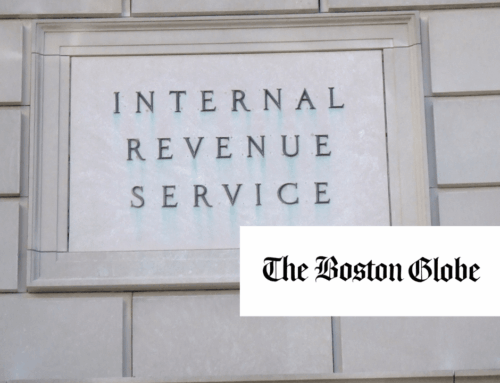Last Wednesday, the Senate Budget Committee held its first hearing of the 118th Congress: “Climate-Related Economic Risks and Their Costs to the Federal Budget and the Global Economy.” The hearing, the first in a series according to Chairman Whitehouse (D-RI), concentrated on the “looming costs and economic risks of climate upheaval.” This is something we were focused on last week also, as changes to federal procurement rules are being drafted (more on that in a minute).
It should come as no surprise that climate change has immediate and long-term costs. And, like the interest payments on our national debt, these costs are large and growing. Indeed, some committee members took last week’s hearing as an opportunity to express their growing concern over our fiscal outlook.
Ranking Member Sen. Grassley (R-IA) lamented that public debt is predicted to reach 110% of our economy in 2032, and annual interest on the debt will cost more than $1 trillion within 10 years. (It will be 132% of GDP in 2032: see last week’s Wastebasket and listen to the Budget Watchdog AF podcast.) Sen. Lee (R-UT) described the state of the federal budget as in “profound disrepair, perhaps more so than at any other time in our nation’s history.”
When it comes to fiscal responsibility, it is a well-known phenomenon that the political party not in the White House usually finds religion. While the party in power spends or cuts taxes catering to their interests. This dynamic helps explain the How and the Why of our current fiscal situation, which is a mess – not least because the compromise and shared sacrifice needed to fix it is especially difficult to imagine in today’s political environment.
Unfortunately, this is even more true for what to do (if anything) about climate change, which is an even more politically charged issue than fiscal discipline. Thanks to the effects of climate change, federal disaster spending for natural disasters in the U.S. like hurricanes, flooding, drought, and wildfires now exceeds the budgets of some federal agencies. On a cost-adjusted basis, billion-dollar disasters in the U.S. have increased from 3.1 a year at an average annual cost of $20.5 billion in the 1980s to 17.8 a year at an average annual cost of $119.1 billion from 2018-2022.
These costs will grow. For example, federal crop insurance costs and supplemental ad hoc disaster aid will continue to increase in the future as the increased frequency and duration of drought will reduce agricultural productivity generally, accelerate the depletion of water supplies for irrigation, and likely expand the distribution and incidence of pests and diseases for crops and livestock.
And disaster spending is not the only way climate change costs taxpayers. Future costs for mitigation and adaptation, while necessary, are enormous. A three-foot sea level rise could threaten as many as 128 U.S. military bases worldwide, valued at roughly $100 billion. Climate change can increase risks to national security, both through direct impacts on military infrastructure, but also by affecting factors such as food and water availability that can exacerbate conflict outside U.S. borders.
The CBO puts it succinctly: “Climate change increases federal budget deficits.”
And so, last week we submitted comments in support of the Federal Acquisition Regulation (FAR) Council-proposed Federal Supplier Climate Risk and Resilience Rule. The FAR is the primary set of rules used by all executive agencies, including the Pentagon, for the acquisition of supplies and services. Obviously, this covers a huge amount of government spending. The federal government spent $630 billion on procurement in 2021, and federal spending comprises about 29% of U.S. Gross Domestic Product. As a result, the FAR shapes markets for goods and services across the economy. This is why TCS President, Steve Ellis, suggested such a change in an opinion piece almost one year ago.
The proposed changes would require certain federal contractors to disclose their greenhouse gas (GHG) emissions and climate-related financial risk and set science-based targets to reduce their GHG emissions. It will direct federal contracting officers to make decisions that will reduce taxpayer exposure to climate risks in the supply chain (something we all learned about after the pandemic).
We support this rule because we believe, quite simply, that it will help reduce the need for the multi-billion dollar emergency disaster relief packages Congress must pass every year in response to the widespread destruction caused by climate change. It is incumbent on federal agencies to limit the liability taxpayers face due to climate change, and this is a cost-effective way to do that.
Uncle Sam often puts his thumb on the scale in other ways to achieve policy goals through procurement. For example, there are small business set-asides that simultaneously promote main street while maintaining the appropriate performance metrics of the contract solicitation. As the world’s largest purchaser of products and services, the federal government has considerable influence and power to direct private investment and innovation.
Promoting development of better, cheaper commercial technology to reduce GHG emissions and their associated costs for taxpayers is common sense federal policy. Indeed, the federal government spends billions of tax dollars every year subsidizing this kind of technology development, such as in the Inflation Reduction Act. Promoting this kind of market development through procurement policy potentially achieves comparable results with far less spending, while helping to slow the growth of future disaster costs.
Less spending AND reduced costs? Sign us up.











Get Social